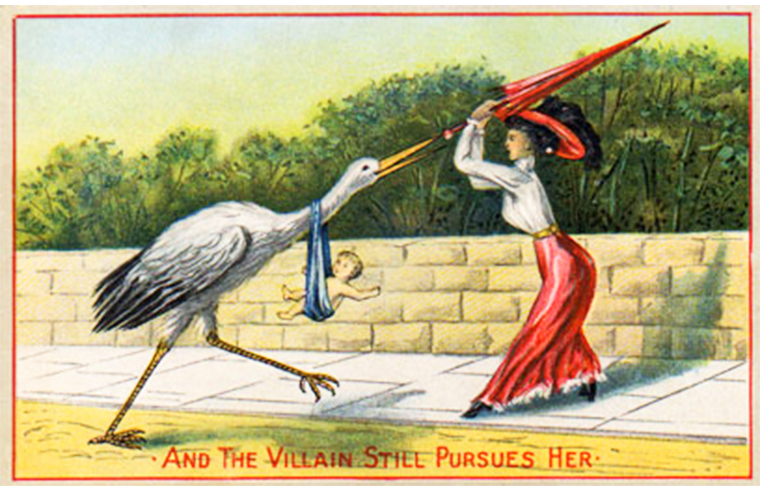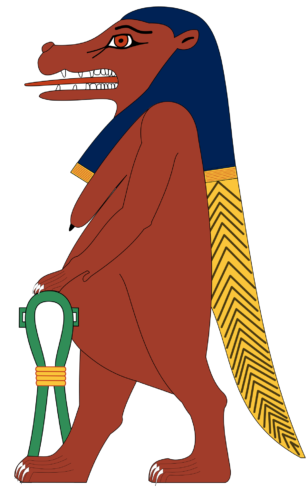Old school methods of birth control were actually totally bonkers

Birth control was a fraught business back in ye olden days. Not only did they NOT have the methods we can mostly rely on now, during some scary eras anyone thought to be encouraging contraceptive use was thought to be … a witch!
We’ve done some very interesting digging into how women tried to avoid pregnancy when modern medicine was not an option. It’s fair to say that most of these methods have us crossing our legs and thanking our lucky stars we were born when we were!
Pessaries, sponges and plugs
Women – of course – bore the bulk of the burden when it came to not getting pregnant. #WhatsNew
Thus a variety of things were popped into their nether regions in the hope of making them impenetrable to sperm. They included:
- Pessaries made from an elephant dung concoction. Yay!
- Pessaries made from crocodile dung paste. Gosh!
- They also tried various organic matter including cabbage, rue, lily root, lint, acacia leaves, salt, silphium leaves and ghee.
- Pieces of sheep’s wool dunked in oil were also sometimes used to ‘plug’ the cervix.
- Sponges or cotton dipped in lemon juice are also on the ancient contraceptive list. Ouch. Ouch. Ouch.
Douches, devices and sticky bits
Sometimes a woman’s vagina was washed out with things cleansing, medicinal, sticky or just plain weird in the quest to stop sperm heading north. Or so the gents said …
- For instance, the ancient Greek philosopher Aristotle came up with the idea of douching with olive and cedar oil before intercourse. Hmmmm.
- Honey was sometimes placed in the vagina to prevent pregnancy too.
- The prize for the most surprising method involves the Middle Ages practice where a woman was encouraged to tie weasel testicles around their thighs during sex to prevent conception. Okaaaayyy.
- Much later on – in the 1920s – Richard Richter developed the first IUD. Guess what that was made from? Silkworm gut! So luxe.
Potions
A holistic approach was sometimes thought best, with women drinking various scary things to avoid conception.
- Copper salt dissolved in water was thought to stop a woman getting pregnant.
- They were also encouraged to drink potions containing mercury, lead, and arsenic. Um. Poison.
- Herbal drinks made from plants like hawthorn, willow and ivy were thought to prevent pregnancy too.
- Wild carrot – also known as Queen Anne’s Lace – was also ingested.

By Artist not credited – Argument in an Off Key., Public Domain, Link
Ancient condoms
Condoms did eventually get invented, and they started off pretty small.
- Oiled paper, animal horn (what?!) and tortoiseshell were used to fashion condoms that just covered the end of the penis. (They’re called ‘glans concoms’!)
- Then syphilis spoiled everything for the men wearing tiny penis hats. They began to require condoms that covered the whole penis to keep those pesky infections at bay.
- England’s oldest condoms – made of animal gut, no less – dated back to 1640. They were discovered in the ruins of Dudley Castle gosh what a lucky find.
- Lambskin, animal bladder and leather were also used as makeshift condoms.
- And to top it all off – titter – linen sheaths were sometimes tied onto the penis with ribbon as yet another anti-pregnancy device. So festive, no?

via Stefan Kühn – CC BY 3.0, Link
The hippopotamus goddess of mothers
Tracking back a little it’s interesting to note that childbirth was a very serious business – because you could easily die. It was especially honoured by the ancient Egyptians. They had several goddesses devoted to birth, my favourite of which is the amazingly toothy, sharp-tongued, magic knife-wielding Tarawet.
She’s part hippopotamus, part cat and a bit crocodile-y too. Tarawet has generous, pendulous boobs and was the main deity women called on to protect them through pregnancy, childbirth and the postpartum period.
Tarawet is also depicted carrying the ‘sa sign’ which is an Egyptian symbol of protection.

By Jeff Dahl – Own work, CC BY-SA 4.0, Link









